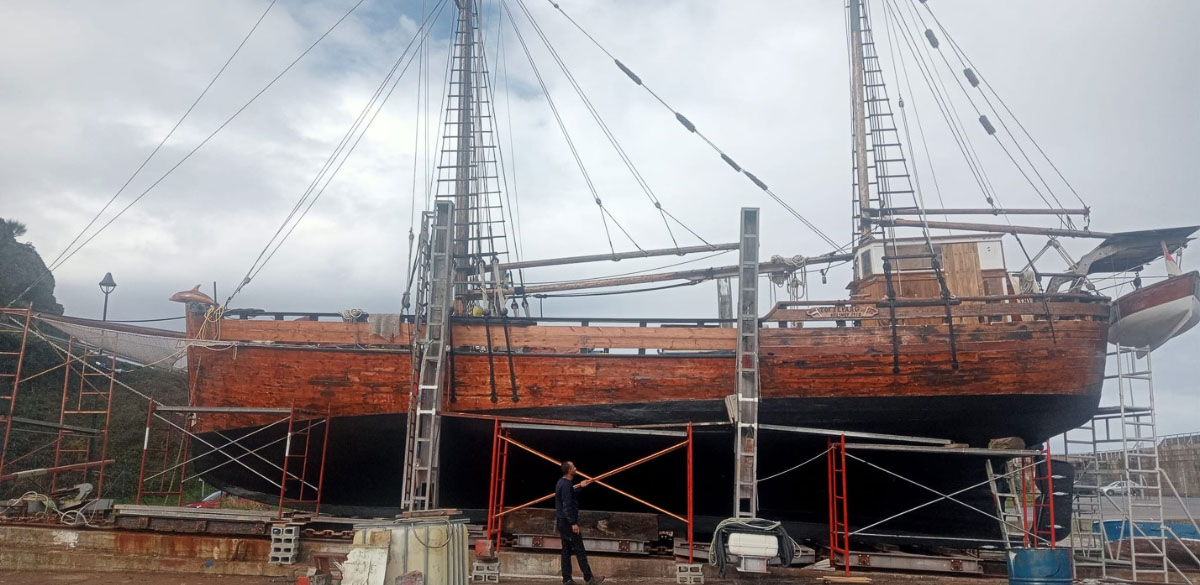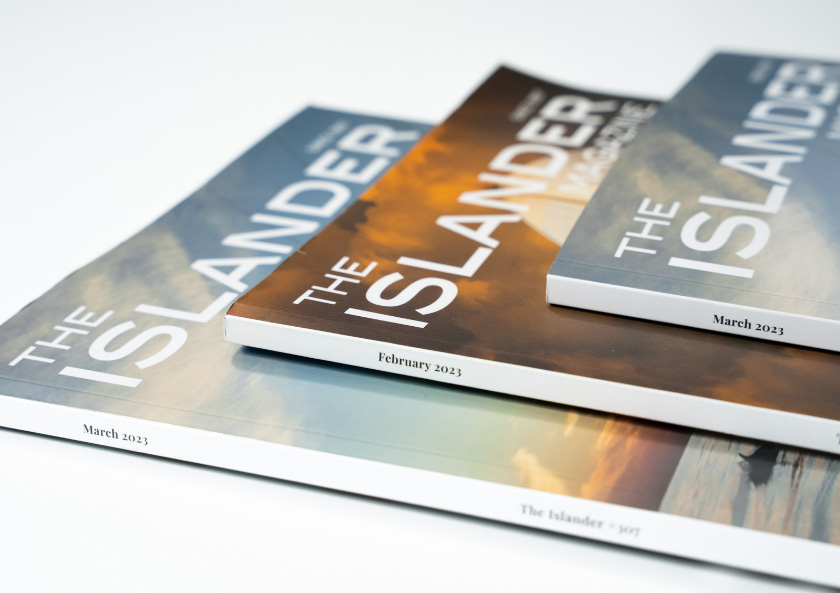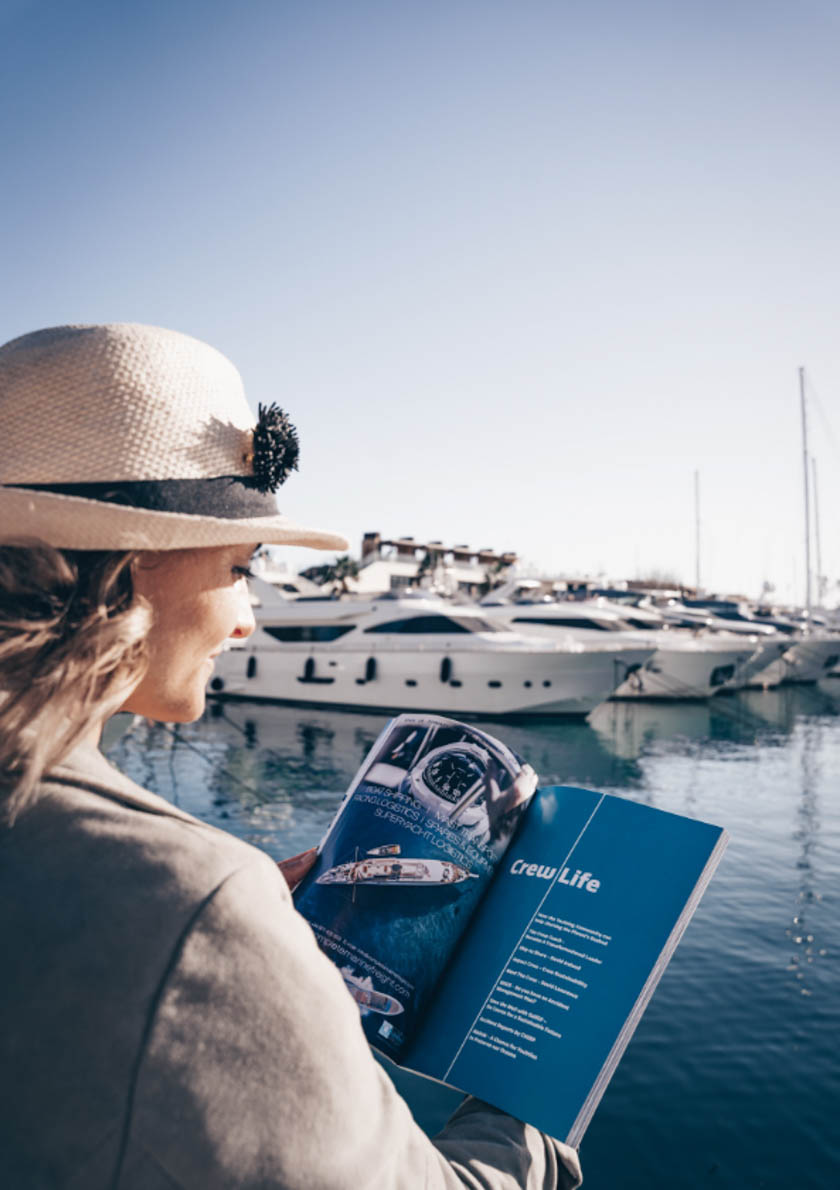Sigurd I Magnusson (born c. 1090, Norway—died 1130, Oslo) was the king of Norway and the first Scandinavian king to participate in the Crusades. He sailed the Mediterranean and ‘visited’ places well known to Toftevaag, such as the Balearic Sea and the Alboran Sea. He also passed through Cudillero in Asturias, where we are now finishing the careening of Toftevaag.
In the beautiful fishing village of Cudillero, this winter is being one of the most interesting, meeting people like “Pepiño” (José Suarez Marques), journalist, author and historian with whom we have spent countless hours listening to his stories about fishers, Vikings, miners and the anecdotes of this Asturian coastline.
Although there is still some colour in this fishing port, it is nothing compared to what it once was, with over 400 fishing boats in the old part of the harbour. Now only around 30 remain. Although tourism is keeping Cudillero alive, many of its houses are now empty.
We have spent the last two months on the slip of Cudillero’s shipyard, managed by Feliciano Fernandez Ruiz, a lawyer, businessman and “ganadero” (rancher), combining office work with running the slip and herding his cows in the mountains of Somiedo. The shipyard seems abandoned but still has amazing workshops with all the necessary tools for building and maintaining wooden and steel fishing boats. For Toftevaag, going up on a slip is a nice change from the travel lifts that we have been used to in the Mediterranean the last 3 decades. This has been the 33rd careening of Toftevaag for us since 1989.
Another figure who has made our winter memorable is Nicanor Vázquez Álvarez, the shipwright who repaired a couple of planks and caulked several meters of seams. Alfredo’s ability to listen and his passion for folklore and history have been crucial to our integration into Cudillero’s community. Asturian food and cider have done the rest.
We now have a beautiful shiny boat back in the water with freshly oiled Norwegian wood and a restored fisher wheelhouse that seems to have always been there. When we went down to the Mediterranean in 1990, we wanted a flush deck, but as we go north we will need to steer under shelter. During the next two months, the maintenance work will continue in order to be ready to set sail north on the 10th of April.
Prospects are looking good for when Toftevaag gets back “home” to the Hardanger Fjord. Mr. Eide Sjo, grandson of Lars Olai Sjo, the shipwright who built Toftevaag in 1907 has promised to give us the tool chest with all the old tools that were used by his grandfather. Back then, everything was handmade. There were no electric saws or drills. There were no cranes. It’s really crazy to imagine!
The Historical Center of Halsnöy is organising a welcome celebration for Toftevaag, and we will end our 2025 trip north tying up at the wharf of the “Toftevaag”, the village where our boat was born. Again, we will be in the wake of King Sigurd, as in this bay the famous “Halsnöy boat” was found in 1896. It is considered one of the most amazing treasures of the Viking era.
In 1896 an extraordinary find was made at Toftevaag, Halsnøy. During the draining of a bog, large oak logs were unearthed, so big that it was impossible to hold around them. At the bottom of the shallows the agricultural candidate, Silseth from Toftevaag, discovered the ribs of a boat, the size of a four-oared boat.
The Viking ship finds of Gokstad and Oseberg opened our eyes to the remarkable shipbuilding techniques of the Vikings 1,000 years ago, but for a long time we knew little of vessels and boat-building even further back in time. The boat find at Bunes became a scientific sensation when Håkon Shetelig examined it in 1903. It turned out to be the remains of one of the oldest boats that we know from the Nordic countries, of the same age as the boat finds in Nydam in Denmark.
Parts of a couple of boat planks, an oarlock and the rib were taken care of and are now in Bergen Maritime Museum. The oarlock proves that it has been a rowing boat. The planks were not riveted, but have been sown together, probably with a rope of raffia. Between them were stuffed pieces of red woollen material dipped in tar, for caulking.
Radiocarbon dating of wood from one of the planks indicates that the boat was likely built during the early Roman period, between 270 and 400 BC.





























0 Comments